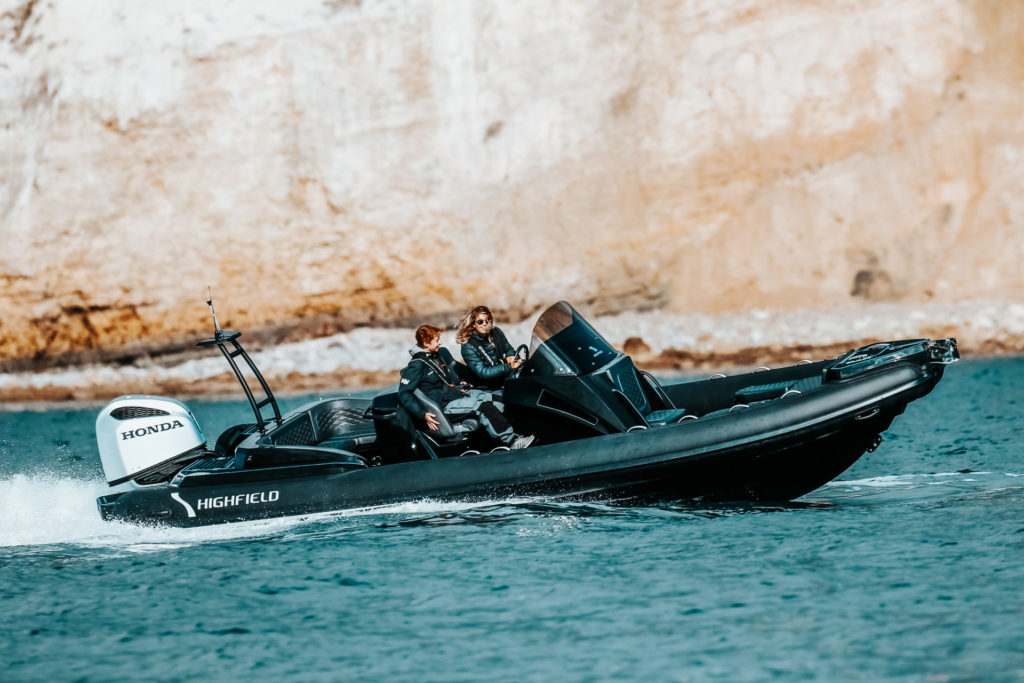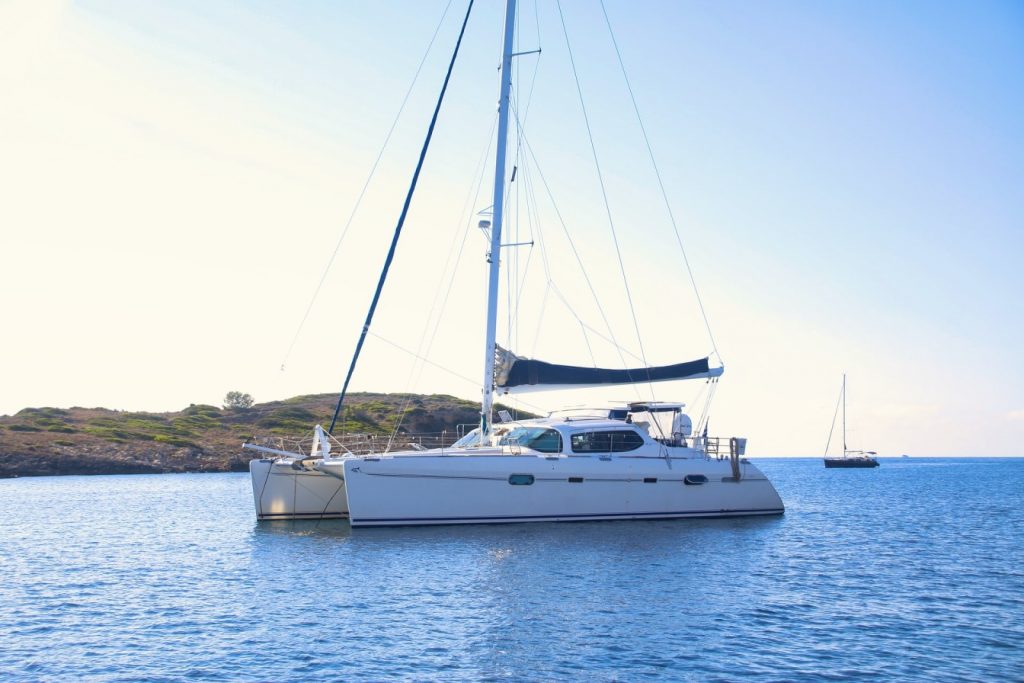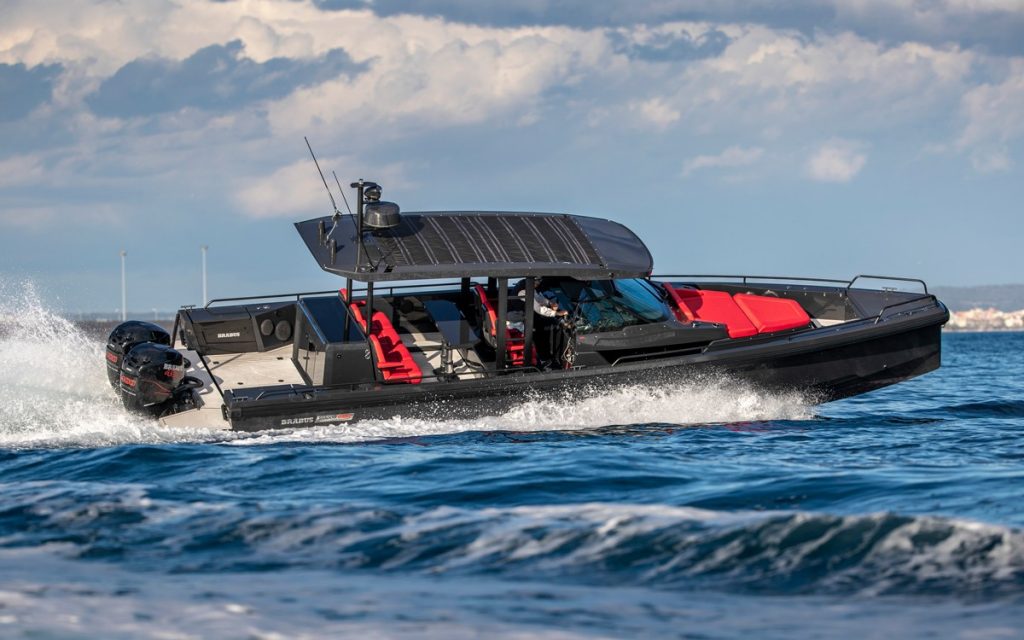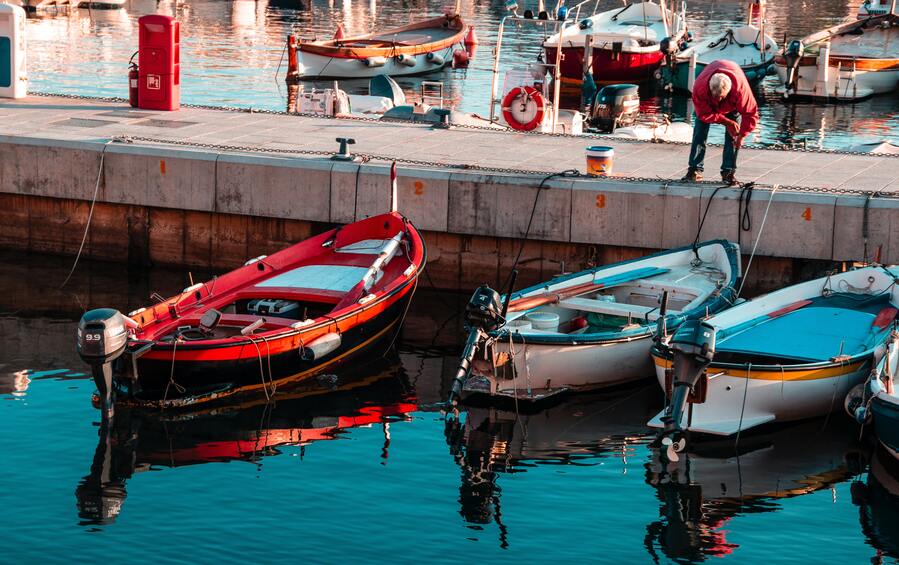Types of boats and ships are diverse and specifically designed for the navigation of their environments. From motor boats to sailboats and unpowered vessels, boats are multifarious in use, size and design. Put simply, a boat is a small to medium-sized vessel used to navigate bodies of water. They differ from ships in size and locale - ships are oceanic and boats stay closer to the shore. There are other more technical definitions, but suffice to say, boats are smaller than ships.
If you're wondering what type of boat to buy, the number of different boats can be overwhelming, but they roughly fit into one of three types. Let’s dive straight in with our guide to the types of boats you’ll find and how to categorise them.
 There are diverse types of boats and ships designed for their specific environments. Image: Grosvenoryachts.com
There are diverse types of boats and ships designed for their specific environments. Image: Grosvenoryachts.com
The Three Different Types Of Boats
While boat classification may have some overlap, you can slot boats across the following definitions:
Unpowered boat
Otherwise known as a man-powered boat, this includes everything from gondolas to rowboats, kayaks and simple rafts. These rudimentary boats were the first boats built and used around the world. People power these boats via oars, paddles, pedals or poles.
Sailboat
Sailboats include any vessel that uses wind power for propulsion. They’ve played an important role in navigational history and include modern-day sailing yachts and catamarans, as well as traditional vessels like Chinese junk boats. Although they rely on wind, most contemporary sailboats come with an engine for windless situations.
Motor boat
Driven by an internal combustion engine, motorboats include cruisers, cuddy cabins, trawler yachts and even the humble motorised dinghy. They can use a number of propulsion systems (inboard, outboard, jet drive, stern power drive, etc.) and have varied hull types/sizes.
Now let’s look at the different types of boats in detail with specific examples. We’ll outline the most common types of boats you’ll find, their characteristics and advantages.
Fishing boat
Boats serve many purposes, from transport to pleasurable boating activities. One of the oldest and most important is fishing. While just about any boat can be used to fish, that doesn’t necessarily make it a fishing boat. Fishing boats are designed for a specific catch - so flat bottom structures are more important in shallow waters, while offshore fishing boats require a more solid body.
A trawler boat is a special kind of fishing boat designed to reach remote anchorages and be ocean-safe. All fishing boats will contain rod lockers to position fishing rods, and most have a front bow and trolling motor system to traverse waters quietly. More advanced fishing vessels have dedicated fish storage space, among other supplies.
Read this article for more information: The 8 Best Upgrades for Your Fishing Boat
Deck boats
As the name suggests, these great boats are known for their large deck areas. Slickly designed with a V-shaped hull, these tidy boats are primarily favoured among recreational users, thanks to the premium deck space. Deck boats are typically open boats that suit recreational activities like offshore swimming.
Banana boat
Some of the most common small boat sightings at seasides are banana boats. This unpowered and inflatable recreational boat is designed to be towed by another motorised vessel, like a jet boat or bowrider. Shaped like a banana, banana boats feature rudimentary handles and fastenings, often with seating space for up to 10 people.
Dinghy boat
Dinghy boats can be a somewhat amorphous term to cover a wide number of small boats that are either inflatable or constructed from hardwood. Commonly used as help boats and thus towed by larger boats/ships, they can navigate tight areas but are not designed for oceanic use. Larger vessels often use dinghies to transfer from boat to shore. A dinghy can also be used as a lifeboat on larger vessels, equipped with essentials like life jackets, and can even include folding boats for practical storage.
Dinghy boats can be powered by oars, sails or small outboard motors, or even solar power in more modern designs. They are also known as rowboats, sailboats or dinghies. Often flat-bottomed and designed to navigate shallow shores, they make perfect day boats for short river trips and camping expeditions.
 Dinghy boats are often powered by oars, sails, small outboard motors, or even solar energy. Image: Highfieldboats.com
Dinghy boats are often powered by oars, sails, small outboard motors, or even solar energy. Image: Highfieldboats.com
Tugboats
If you spend any time watching ships in ports, you'll have noticed these hard-working small boats. Tug boats are navigational support boats that aid large boats into port or through canals. Powerful for their size, they can also be used to help salvage or secure distressed vessels. You'll find them at strategic spots along sea routes, ports and harbours, where they help push or pull larger ships into position. Tugboats can fool you with their compact size but they boast powerful 500 to 2,500 kW+ diesel engines. As ships get even larger, these tugboats get stronger.
Pontoon boat
Pontoon boats are flat vessels that rely on pontoons (tubes) to float. Typically used for recreational trips in beauty spots, lakes and fishing areas, pontoons possess large boat decks and are great for relaxing cruises. While typically geared toward family and entertainment use, the largest pontoons can seat up to 25+ people.
Maintenance of pontoon boats is low and the boat itself is powered by an engine that can provide significant speed along rivers and lakes. In pockets of Africa, these cheap and reliable boats are commonly used as ferry boats to transport people across riverways. Variations of pontoon boats include recent trends like sauna boats – essentially floating saunas on pontoons.
Catamaran boat
Catamarans are sailboats or motorboats that are defined by their multi-hull structure. Consisting of two parallel hulls, they offer premium comfort due to their large living quarters and expert stability. Consisting of two engines, one for each hull, they benefit from great manoeuvrability with full 360-degree turns.
One of the advantages of the two hulls is a shallower draft and less hull volume, making catamarans an expert choice for recreational fishing or leisure cruising. Their broader size also means that they don't tilt or move on water, which is a dream for seasick people.
 Catamarans' broader size means that they don't tilt or move on water, making them ideal for seasick people.
Catamarans' broader size means that they don't tilt or move on water, making them ideal for seasick people.
House boats
As the name suggests, a house boat is floating, sailing home. Their designs range from compact floating homes for two to multi-function entertainment boats with luxury sleeping spaces for large families. While they come in all shapes and sizes, they tend to be bulky and designed for relaxed mooring.
Most houseboats are fully motorised to cruise calm waters, but some cannot move on their own and must be towed. Enjoy boat games and prized evenings from the luxury of a pretty shoreline with houseboats.
Narrowboat
A narrowboat is a familiar sight on British canals and inland waterways. Designed specifically to navigate these tight inland waters, they must be under 7ft long to enter locks. Commonly powered by diesel, they historically began life-powered by horses pulling the boats from canal paths.
Want to take the voyage yourself and nestle into a cosy floating cabin? Here we break down the costs, tips, and things to look for when living on a narrowboat in the UK.
 Narrowboats are designed specifically to navigate these tight inland waters.
Narrowboats are designed specifically to navigate these tight inland waters.
Runabout boats
Runabout boat is an umbrella term used for many small motorboats that hold from 4 to 10 people. Usually less than 35 ft in length, runabouts are used for pleasure boating, fishing, racing and to aid water sports like water skiing and parasailing. They also come with a swim platform for recreational use.
Common types of runabout boats include bowrider boats, centre console boats, walkaround boats and cuddy cabin boats. Often powered by an outboard or stern-drive motor, each variation is identified by its name:
Bowrider boats
Bowrider boats have seating in the bow. Designed for recreational day cruises and sports towing, the area in the front doubles as a lounging area.
Cuddy cabin boats
Cuddy cabin boats feature closed decks over the bow. Exceptional for small families and friends, they are commonly used for yachting, fishing and swimming expeditions.
Centre console boats
Centre console boats have a helm in the centre. There's no cabin onboard a centre console boat, and it's particularly favoured among sports fishers due to its practicality and size.
Walkaround boats
Walkaround boats feature narrow pass-ways on either side of a cabin. These are mostly used for fishing and also make fine recreational vessels, thanks to small cuddy/cabins.
Tow-sports boats
Runabout boats used for sports are generally called tow-sports boats but can be further defined by their specific use. Surf boats, ski and wakeboard boats are just a few examples.
 Wakeboard and ski boats are medium-sized vessels used for recreational boating activities such as watersports and day cruising. Image: mby.com
Wakeboard and ski boats are medium-sized vessels used for recreational boating activities such as watersports and day cruising. Image: mby.com
Cigarette Boats
Like runabout boats, cigarette boats are designed for racing. Taking their name from their long shape, they are an actual brand rather than a specific type. They slot into the "go-fast boat" category as vessels designed for powerboat racing in offshore waters.
Jet boats
These agile and quick vessels are defined by their jet propulsion. Powered by a jet of water that’s ejected at the back, they differ from general motorboats as they draw water from under the boat itself and into a pump-jet. While jet boats can include military and transport vessels, they are commonly used in adventure tourism around rivers and waterfalls. Personal watercraft like jet skis use jet power, too, but are distinguished by the rider being "on" rather than "in" the vessel.
Conclusion and other boats
The world of boating is far larger than any types of boats listed here, so we've highlighted the types most commonly seen. From sailing boats that rely on wind propulsion to a motor yacht capable of up to 70.1 knots, boats come in all shapes and sizes. They're defined both by their power type, whether man-powered boats or outboard motor-powered boats, as well as their use. The next time you hop aboard your cabin cruiser for a relaxed cruising trip, remember the lineage dates back to humble log boats that helped make boating history.




